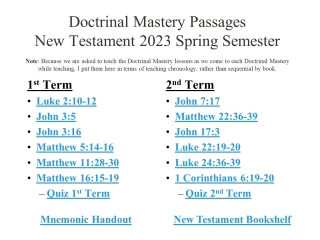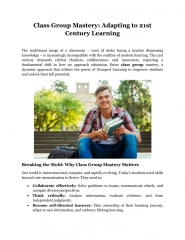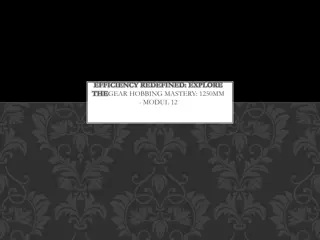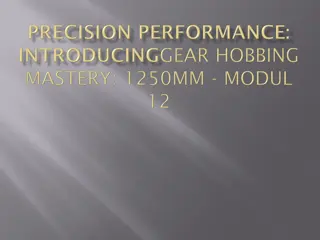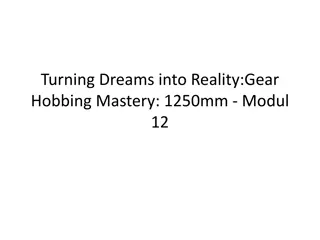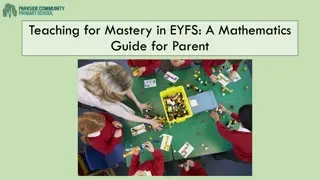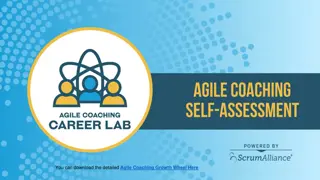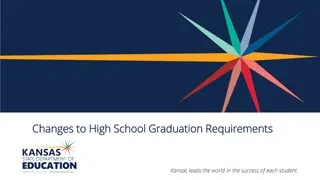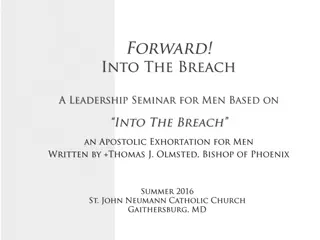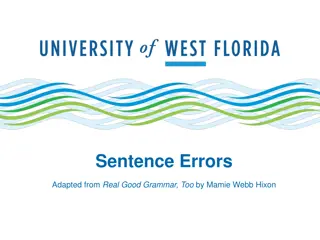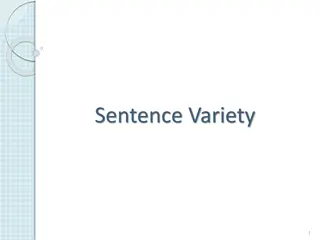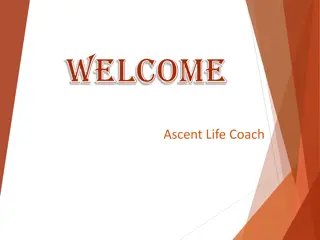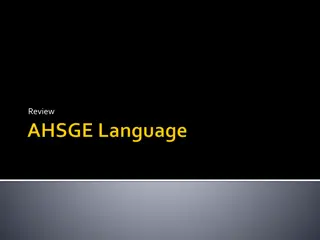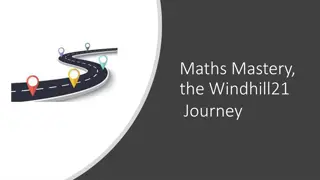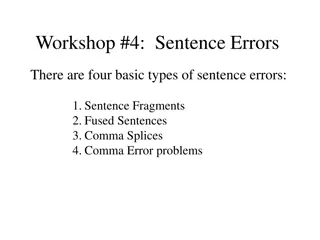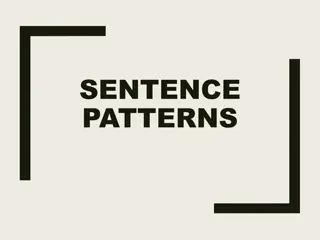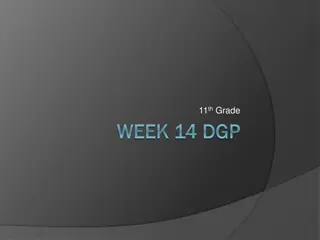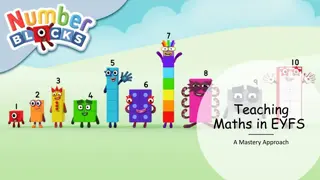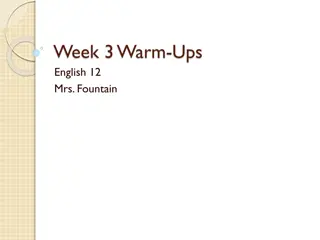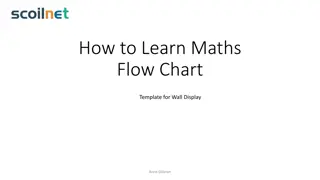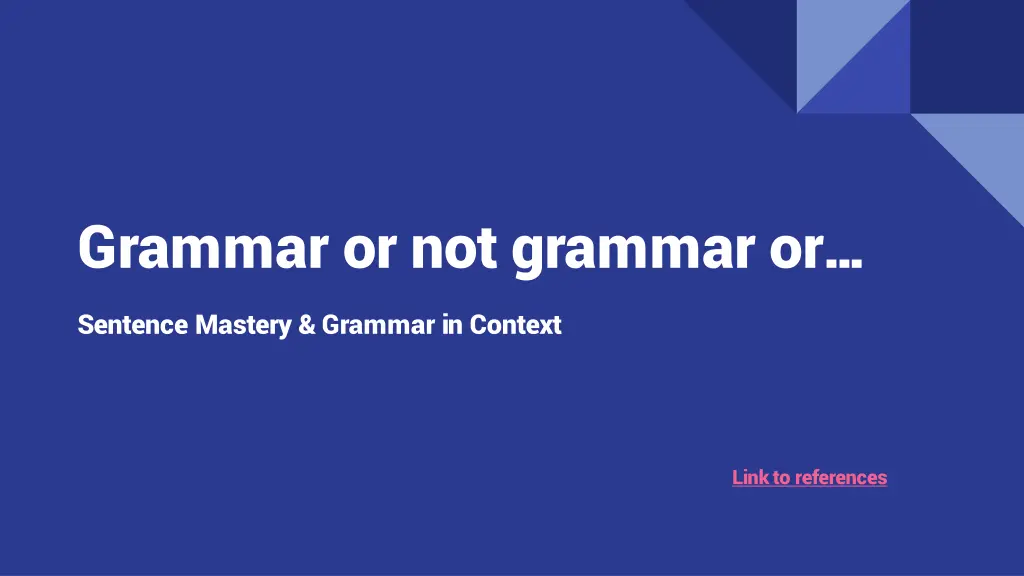
Understanding Grammar: Importance, Teaching Methods, and Impact on Writing
Explore the significance of grammar in improving students' linguistic knowledge and writing skills. Delve into various perspectives on grammar instruction, ranging from traditional approaches to more contemporary methods. Discover the nuances of grammar's role in language structure, syntax, usage, and mechanics, and unravel the complexities of balancing error correction with fostering creativity in students' writing.
Download Presentation

Please find below an Image/Link to download the presentation.
The content on the website is provided AS IS for your information and personal use only. It may not be sold, licensed, or shared on other websites without obtaining consent from the author. If you encounter any issues during the download, it is possible that the publisher has removed the file from their server.
You are allowed to download the files provided on this website for personal or commercial use, subject to the condition that they are used lawfully. All files are the property of their respective owners.
The content on the website is provided AS IS for your information and personal use only. It may not be sold, licensed, or shared on other websites without obtaining consent from the author.
E N D
Presentation Transcript
Grammar or not grammar or Sentence Mastery & Grammar in Context Link to references
Teaching grammar improves students knowledge of linguistics. But if students writing is to improve, teachers need to teach writing. (Patricia Dunne, Bad Ideas about Writing) Braddock and colleagues (1936) and Hillocks (1986): Studies of traditional school grammar shows no effect on raising the quality of student writing . Taught in certain ways, grammar and mechanics instruction has a deleterious effect on student writing. (Deborah Dean, What Works in Grammar Instruction) Somewhere between the folly of pretending that errors don t matter and the rigidity of insisting that they matter more than anything, the teacher must find his answer, searching always under pressure for short cuts that will not ultimately restrict the intellectual power of his students. (Mina Shaughnessy, Errors and Expectations)
Ever see something like this? Prompt: Respond to the following statement. It is not true that we have only one life to live. If we can read, we can live as many lives, and build as many kinds of lives as we wish. S.I. Hayakawa Student response: From the quote I read by S.I. Hayakawa, I think reading gives you more personalities.
How about these? In H.G. Bissinger s book Friday Night Lights,a story not of a high school football team s trials and tribulations is told, but rather a gritty telling of what really goes on in a small town. In the book And Still We Rise by Miles Corwin shares the life stories of these talented students at Crenshaw.
And then there are these Although I was feeling sick, but my mom made me go to school anyway. At first those guys on that team pissed me off. Although, now I respect them they are our rivals.
The bad news, good news, bad news Bad news: we can t teach grammar the way we think we should. Good news: we can borrow from linguistic grammar and work being done in middle and high schools to scaffold sentence mastery techniques. Bad news: it s not a one-and-done proposition. We have to set priorities about what we teach, when, and how. What do we mean when we talk about grammar ?
Grammar = structure of a language Syntax/structure: the man threw a ball vs ball man a the threw Usage: changes over time (thee and thou, they as singular pronoun The student has their book. ) s/he or herm Mechanics: punctuation By the age of four, most kids have a pretty sophisticated understanding of the grammar of whatever language they re around the most (think immersion). Aaron Barlow s assignment: create a grammar for texting
Grammar is fraught SWE (Rule Britannia!) Class/Moral component (thank you John Locke) Translanguaging -Jamilla Lysicott s TEDTalk Three Ways to Speak English cf Pygmalion Terms versus practice -do students need the jargon of grammar ? what part of speech is fly ? Metalinguistic awareness -connecting linguistic form to rhetorical meaning making Linguistic/generative/rhetorical grammar
Say what? Teaching grammar in context Teaching grammar in context middle/high schools have them 4-5 days a week, higher education has them one or two days a week if we re lucky. Annotated bibliography done for WPA-CompPile by Lancaster and Olinger in 2014 of teaching grammar in context in higher ed settings. A lot does go back to sentence combining, which still is demonstrably effective. And student generated and edited work. And workshopping. How do we add it in? We incorporate it with initial class activities, and then homework and writing workshops. Teaching ideas and thinking are great, but if they can t put those thoughts into writing, what good are we doing them?
To sum up the modules in progress 1. Grammatical core (introduce grammar, subject-verb core, branching elements) 2. Signal words and comma causers a. AAAWWUBBIS b. Other introductory elements like prepositional phrases, verbals, transition words 3. Birds a. Who birds (relative pronouns) b. Who-less birds (noun appositive) 4. -ing bombs (present participial phrases)
Grammar in Context Modules 1. Models: asking students what they see 2. Deconstruction and modeling: explaining 3. Imitating: a. b. c. d. manipulative sentence scrambles: refrigerator magnets simple sentence-combining exercises written sentence scrambles sentence modeling by students 4. Share and analyze 5. Celebrate their accomplishments 6. Optional Extensions: a. b. their own work either as individual homework or in groups questioning and expanding the basic structures, asking students to write a short response to a prompt, then looking for a place(s) to use the model in
Module 1 Grammatical core (part 1) Introduction: What do they think they re the worst at? Define grammar as language. Aaron Barlow s text exercise. A bit of history. SWE. Jamilla Lysicott TED Talk (with transcript) Did they learn parts of speech in school? Define noun. Define verb. Do fly. Model: Grammatical subject/core = sentence focus = who/what does/is. [Noguchi s questioning strategy] Two-word poem (is it or isn t it?) He paced. And mosquitoes. Stacy gasped. Eric stirred. And gnats. Another corpse. Jeff shrugged. Amy turned. To look. Jeff nodded. Jeff sighed. --Scott Smith, The Ruins (2006)
Grammatical core (part 2) Imitate: pick focus (list 15 ideas, pick favorite, list terms for that idea, write imitation) Share and discuss: revisit is it or isn t it? Have them figure out how to make an it isn t into a sentence. The Water Cycle Sun shines. Water heats. Vapors rise. Clouds build. Ran falls. Lakes swell. Oceans fill. Sun shines. And the cycle goes on and on. Sports A player passes. Ball flies. Girls scream. Cameras click. An agent approaches. NO ONE writes two-word sentences!!!
Grammatical core (part 3) Introduction: left-and right-branching elements and interrupters that don t change the grammatical core Grammatical core (subject + verb) Left-branching elements Right-branching elements Set the scene Main core + interrupters that can set up and/or comment Comment on the action Model: start with cat swims and class adds any/all of the above without adding a new grammatical core. Imitate (group activity): start with student reads Share/analyze: any compound sentences? Where s the core!!! Extension: Write from short prompt. Locate grammatical core in each sentence.
Module 2 Introductory Elements: U-turns (AAAWWUBBIS Words) Model: If I had a million dollars, Explanation: Get them to say it s a U-turn or what happened structure. AAAWWUBBIS: after, although, as, until, when, while, until, because, before, if, since. Added to a grammatical core to set up a U-turn or a what happened? If they re at the beginning of a sentence, they always cause a comma because it s setting up the U-turn. Imitate: Exquisite corpse-like activity: first person writes an AAAWWUBBIS + comma, pass off page to next person who adds where the U-turn is going. Then write a new AAAWWUBBIS + comma, pass it off Share and discuss Extension: write a low-stakes response to a prompt, look for places to do U-turns. Individual or group. practice moving AAAWWUBBIS around the sentence. What happens to the comma?
What about comma splices & run-ons? One theory they hide modifiers that can be incorporated into the main sentence/idea using relative pronouns and various appositive structures. Latent Free Modifiers
Who birds (Dime Droppers/relative pronouns) Model: Imitate: Give them a scramble, they unscramble, write an imitation of the structure using their own ideas. Share and analyze: Extension: Low-stakes writing prompt. They then look for places to add who birds. Each paragraph of current major essay draft. Look for places to add who birds. example (list plus example) Rule of Placement (close to noun) manipulative scramble (refrigerator magnets)
Who-less birds (Smack Talkers/noun appositives) Model: Imitate: Give them a scramble, they unscramble, write an imitation of the structure using their own ideas. Share and analyze: Extension: Low-stakes writing prompt. They then look for places to add who-less birds. Each paragraph of current major essay draft. Look for places to add who-less birds. Example: a who-bird without the who Rule of Placement (close to noun) manipulative scramble (refrigerator magnets) Examples and activities Scramble & imitation examples
Other modules -ing bombs Module Present participial phrases Difference between them and who-less birds is they comment on action rather than things. Same scaffolding applies A final module on putting it together playfully Write the longest sentence with one core you can. Write the shortest. Put them together in a paragraph. Share with others. Workshop your introductions (or whatever) by focusing on who-birds, who-less birds, U- turns/AAAWWUBBIS, and -ing bombs.
To sum up the modules in progress 1. Grammatical core (introduce grammar, subject-verb core, branching elements) 2. Signal words and comma causers a. AAAWWUBBIS b. Other introductory elements like prepositional phrases, verbals, transition words 3. Birds a. Who birds (relative pronouns) b. Who-less birds (noun appositive) 4. -ing bombs (present participial phrases)
Tentative module materials The intention is to create five modules which will be available on the CityTech First Year Writing site, and can be used by instructors in the department individually or as a term-long workshop offered once every 2-3 weeks. Each module will include: Learning Outcomes A slide show and instructor s manual that introduce the module concepts and scaffolding activities Lesson Plans with both an overview and scaffolded instructions In-class teaching tools such as slide shows and activities Handouts and other tools for students References

